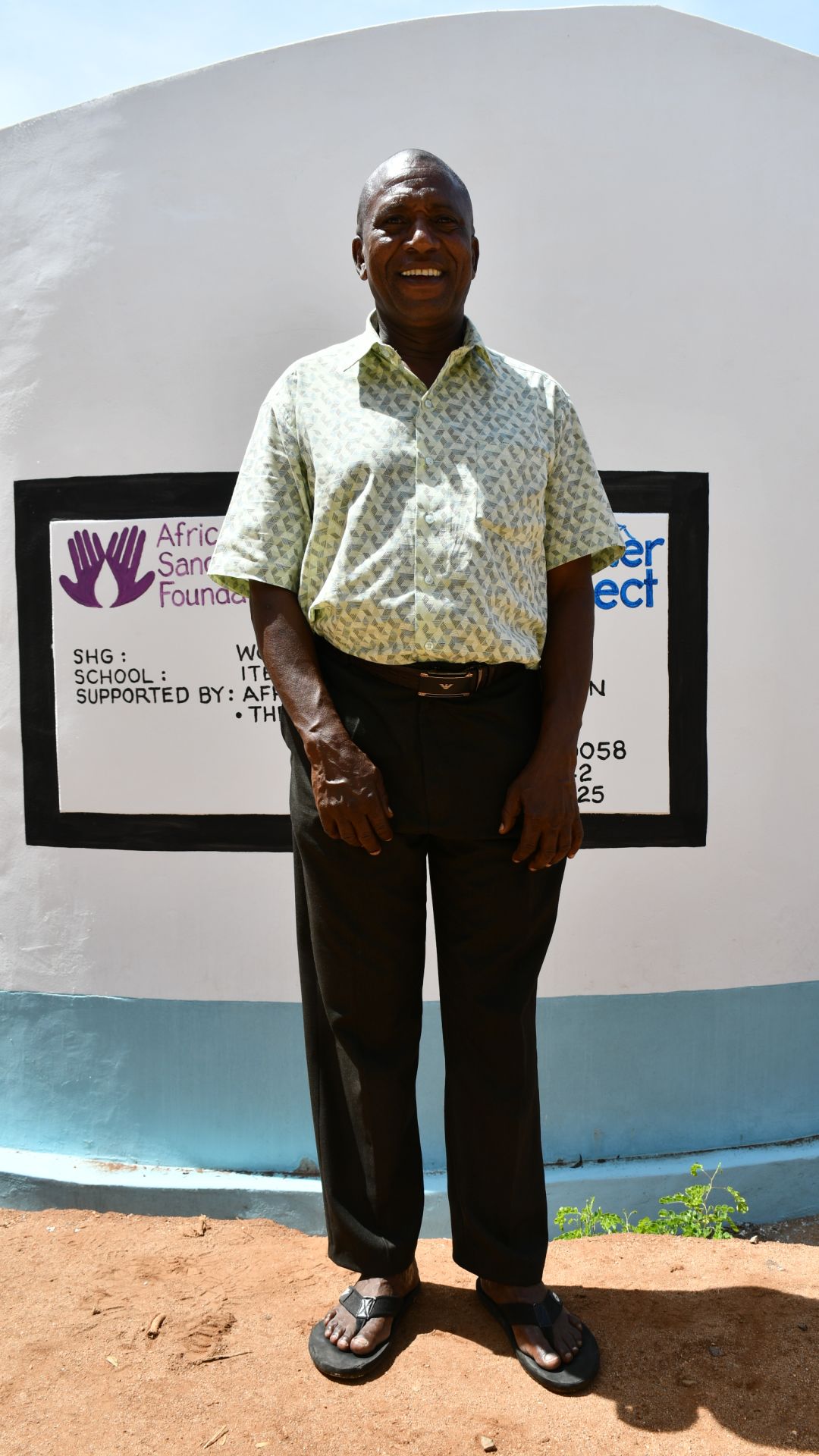The Itendeu Secondary School's 266 students and 21 staff members struggle to have sufficient water to meet their daily needs. The few rain tanks on the school campus can not possibly hold enough water to meet everyone's needs, especially with the short, sporadic rains in this arid region of Southeast Kenya.
"The learners spend a lot of time trying to fetch water during breaks, and some resume their studies without getting any water to drink. The water in the school is also not enough to conduct regular hygiene and sanitation; thus, classrooms are dusty, and latrines emit an unpleasant odor," said Field Officer Alex Koech.

Students do their best to juggle their learning schedule with time to collect water so they do not have to go without it or go thirsty, but they often find the task impossible.
"We only fetch water during breaks because that is the time when the water point is unlocked; however, not everyone is able to draw water because we are too many," shared 15-year-old student Titus.

Titus (left) at a rain tank with his teacher, Chris Kalonzo.
"We often quarrel with our classmates as everyone struggles to fetch water. When there is a queue, others jump the queue when there is no teacher to supervise," Titus continued.
"I spend a lot of time fetching water which I could use to study. I get distracted by thirst, and [I am] unable to focus on my studies."
When the water tanks on the school campus run dry, the school is forced to pay water vendors to collect water from faraway dry riverbed scoop holes. This exhausting task often delays the school's daily schedule.

A water vendor delivering water by donkey.
"Meals are often prepared late because water vendors delay because they have to go far to fetch water. The water vendor draws water from a scoop hole at the river [and] then avails it to school. The scoop holes are unprotected and shared with livestock that contaminate it. Although the water is clear, it has a saline taste and a foul smell due to animal excretion, dust, and other debris that find their way to the water point," said Alex.
However, interference with learning is not the only cost students pay. Drinking contaminated water from the scoop holes is an unpleasant experience that puts their health at risk every time they consume it.

A scoophole.
"Learners often contract water-related infections like typhoid, amoeba, and diarrhea after drinking water drawn from scoop holes in the distant rivers. Due to exposure to water-related infections, students are often absent from school as they seek treatment," continued Alex.
"I feel bad because we do not have enough water in our school. We do not have enough storage to harvest rainwater, and the water vendor cannot avail enough water for all of us," said Titus.
"The proposed 104,000-litre rainwater tank will provide adequate water that will promote clean classrooms, latrines, and safe drinking water. This will reduce the risk of waterborne diseases among students and staff, promoting better health and attendance. Clean water will support a conducive learning environment by ensuring hygienic conditions and reducing distractions related to health and sanitation issues. Students will focus better on their studies, leading to improved academic performance," concluded Alex.
Steps Toward a Solution
Our technical experts worked with the local community to identify the most effective solution to their water crisis. Together, they decided to construct a rainwater harvesting system.
Rainwater Harvesting System
A rainwater collection system consists of gutters that channel rainwater effectively into large holding tanks. Attached to buildings with clean, suitable roofing, these systems are sized according to the population and rainfall patterns. Water can be stored for months, allowing for easy treatment and access. Learn more here!
Handwashing Stations
Alongside each water source, we install two gravity-fed handwashing stations, enabling everyone at the school to wash their hands. Handwashing is crucial for preventing water-related illnesses within the school and community. Student “health clubs” maintain the stations, fill them with water, and supply them with soap, which we often teach them how to make.
School Education & Ownership
Hygiene and sanitation training are integral to our water projects. Training is tailored to each school's specific needs and includes key topics such as proper water handling, improved hygiene practices, disease transmission prevention, and care of the new water point.
To ensure a lasting impact, we support forming a student health club composed of elected student representatives and a teacher. These clubs promote hygiene practices schoolwide and keep handwashing stations well-stocked. This student-led model encourages a sense of ownership and responsibility.
Safe water and improved hygiene habits foster a healthier future for the entire school.

 Rainwater Catchment
Rainwater Catchment
 Rehabilitation Project
Rehabilitation Project





























